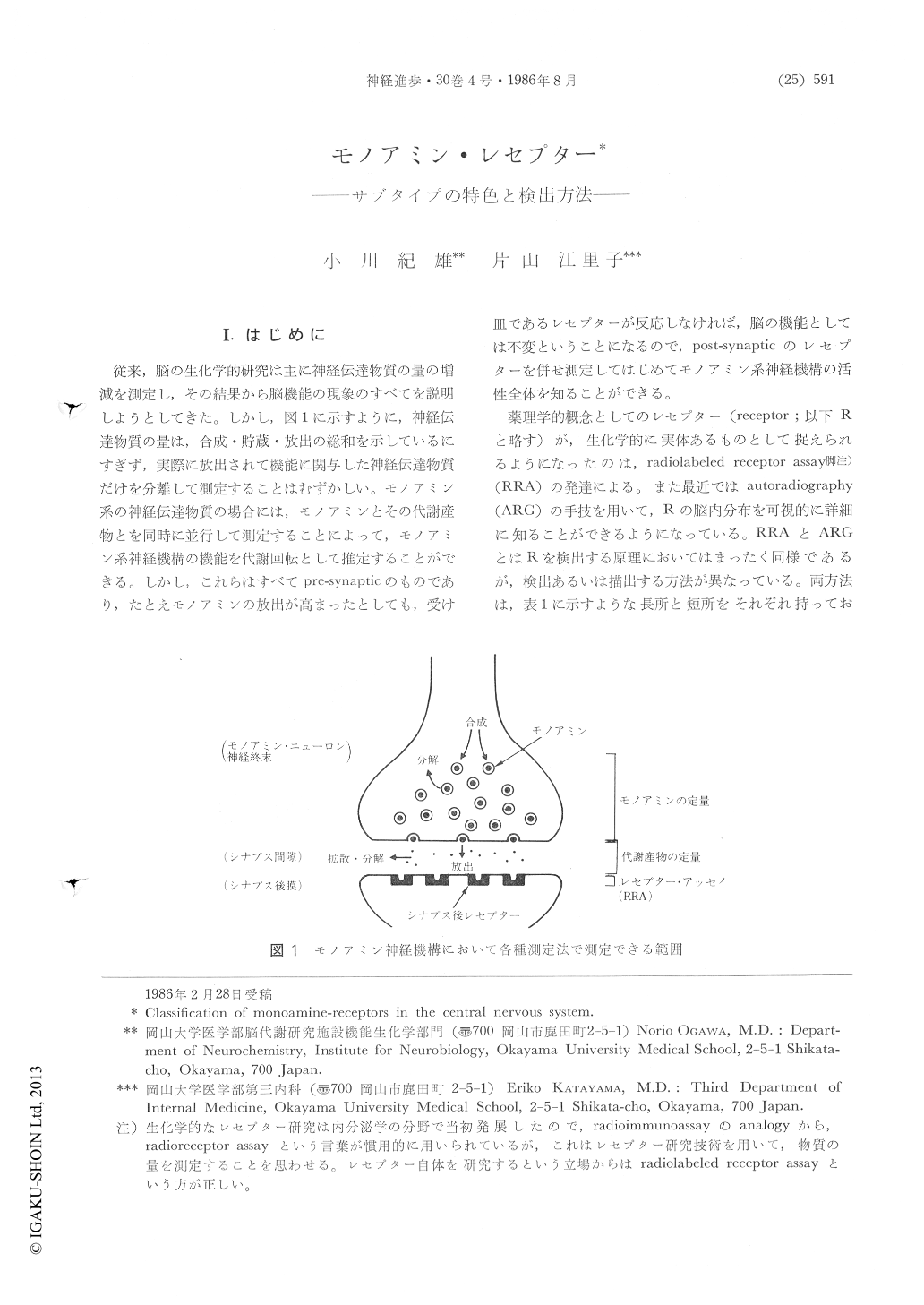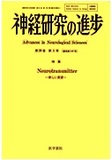Japanese
English
- 有料閲覧
- Abstract 文献概要
- 1ページ目 Look Inside
I.はじめに
従来,脳の生化学的研究は主に神経伝達物質の量の増減を測定し,その結果から脳機能の現象のすべてを説明しようとしてきた。しかし,図1に示すように,神経伝達物質の量は,合成・貯蔵・放出の総和を示しているにすぎず,実際に放出されて機能に関与した神経伝達物質だけを分離して測定することはむずかしい。モノアミン系の神経伝達物質の場合には,モノアミンとその代謝産物とを同時に並行して測定することによって,モノアミン系神経機構の機能を代謝回転として推定することができる。しかし,これらはすべてpre-synapticのものであり,たとえモノアミンの放出が高まったとしても,受け皿であるレセプターが反応しなければ,脳の機能としては不変ということになるので,post-synapticのレセプターを併せ測定してはじめてモノアミン系神経機構の活性全体を知ることができる。
薬理学的概念としてのレセプター(receptor;以下Rと略す)が,生化学的に実体あるものとして捉えられるようになったのは,radiolabeted receptor assay脚注)(RRA)の発達による。また最近ではautoradiography(ARG)の手技を用いて,Rの脳内分布を可視的に詳細に知ることができるようになっている。
Conventional biochemical studies of the brain have attempted to explain all the functional phenomena of the brain on the basis of the measurement of the amounts of neurotransmitters. However, such measurement represented the sum of their synthesis, storage and release, since isolated determination of the neurotransmitters actually involved in the brain function was difficult. The activity of the monoaminergic neural system may be estimated by the turnover rate of monoamines by determining the amount of their metabolites.However, these values reflect only the pre-synaptic changes, and the function of the monoaminergic neural system can not be assessed in its entirety without simultaneously evaluating post-synaptic receptors as well.

Copyright © 1986, Igaku-Shoin Ltd. All rights reserved.


